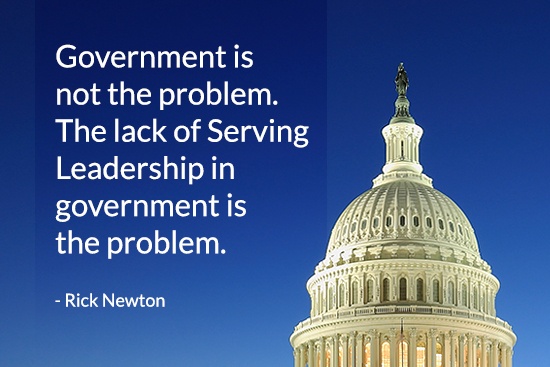This month’s entry is a guest post written by Rick Newton. He co-founded the Center for Serving Leadership with John Stahl-Wert in 2015 because of their shared vision and passion of equipping leaders to awaken, align, and achieve Great Purpose.
Here in the United States, we have just come through a historic election – unlike one that anyone has ever seen. Don’t worry – I am not going to get into political opinion, but I do want to get into politics – and talk about how Serving Leaders are needed in every facet of society, especially Government.
There are many problems with our society, and I trace all of them back to leadership – or to be more precise, a lack of serving leadership. Too often, leaders in government are self-centered, egotistic, and more concerned about staying in power than serving the people they represent.
When self-centered leadership is in place, we see the results: name-calling, blame-shifting, miscommunication, no communication, undermining, dysfunction, and an inability and unwillingness to rise above differences to serve the common good.





